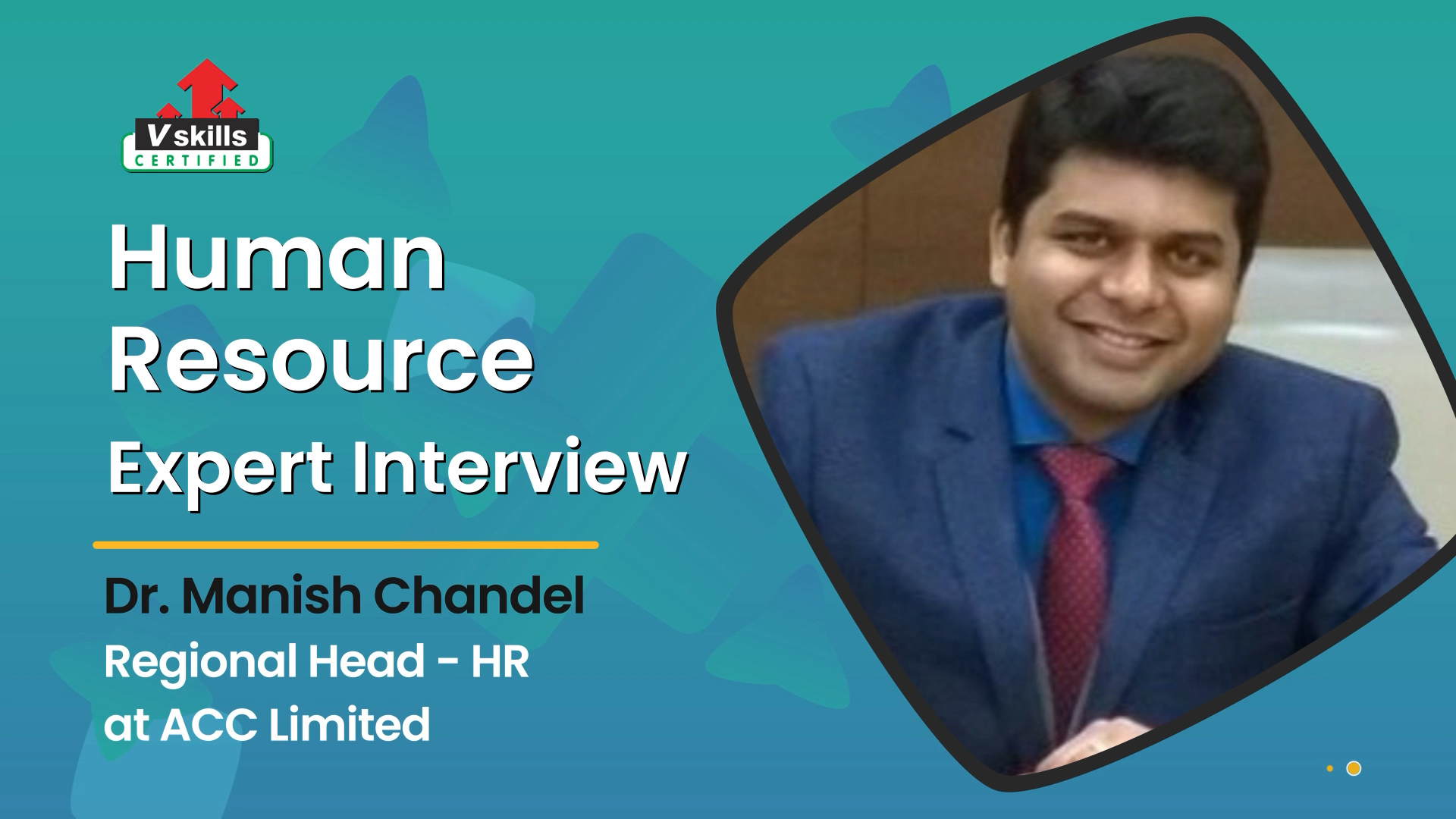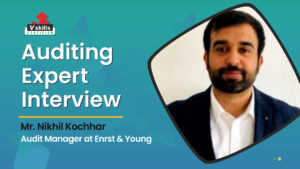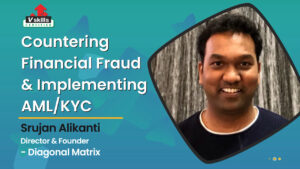Today we have with us Dr. Manish Chandel who has over 12 years of experience in Human resource business partnering, Industrial Relations, Land & Legal Management and Employee Engagement. He is currently working as HRBP – Commercial for the East and Central India operations in ACC Limited. He carries a Doctorate in Personnel Management and Masters in Psychology with Post Graduate in Human Rights. Apart from these, he has done several HRM related certifications from institutions like IIT Kharagpur, IGNOU, IIM Bangalore, Jain University, national academy of legal studies & research, Hyderabad etc. His greatest strength is his ability to communicate effectively in a dynamic environment that needs a high degree of innovation, resourcefulness and interpersonal skills.
1. Can you tell us more about your journey and why did you choose this field?
Answer: Very difficult question to answer because it wasn’t a planned one. By graduation, I am a mechanical engineer. In those days every parent’s wish was for their child to become either an engineer or a doctor. But thanks to my teacher during my MBA days, they enlightened me with my actual calling. The skillset of understanding the human side of a business and the ability to influence the business to excel by balancing the machine with aspiration and potential is not so easy. That is the fuel which made me choose this career.
2. What is your management style? How do you drive results for effective management?
Answer: If I consider myself, I practice an affiliative management style. For me, my employees are my first priority. I think I am a part of a team and not a step above. I think all problems can be solved by understanding and building trust. Which is very much important in today’s world. For me, my employees make my company run. Their satisfaction and perspective are my utmost priority. How I drive the business result, I follow 5 points which will be very much effective for any affiliative management practitioner.
The first one is prioritizing and trusting an employee’s morale. I try to be trustworthy with my direct reports. I try to prioritize their interest and esteem morals. The second one is giving constructive feedback. I try to become very much honest with my employees and believe in balancing constructive criticism with positive feedback. I want employees to sense their own value and never get walked down by any instance.
Sometimes employees live with the guilt of any mistake committed by them. I try to keep them calm and help to overcome these things. Concentrate o their own strength. The third is emotional intelligence. I try to understand my team’s emotional needs and psychological well-being. These interns help my team achieve a higher drive for success. In participative dialogue, I always offer a broad communication channel. Anybody can anytime provide me with any kind of communication.
They can approach me anytime, they can discuss me anytime, and ask for guidance for me. These particular aspects actually facilitate confer resolutions and open the floor for team members to share exciting ideas to improve the company. Last but not least is a strong moral compass. A leader must lead with morals. I do not put my employees in ethically compromised situations. These values and competencies are not exclusive to any affiliative leaders. Many of the other leadership styles like democratic leaders or pace-setting leaders also showcase the same kind of leadership skills.
3. How do you focus on connecting talent management practices to companies’ strategic priorities?
Answer: If we see a good talent management strategy puts processes in place which enable matching the job resources when the job demands are very high. If you see the job demand resource model, people will be more engaged. Job demands are met by a higher level of job resources. So there are 2-3 points which need to be taken care of while making our strategy for talent management. What are our strategic priorities? Every company is having their strategy at the start of the year. Sometimes organizational goals are set by the board of directors and sometimes we use a business balance support card to define business strategy.
It is strategic priorities that are keen to select the focus areas for HRs. So they answer questions like should we prioritize sales or marketing? Are we focusing more on expanding our customer base or deepening the customer relationship? So are we working in a project-based manner or we are the operational partners for our clients? These are some questions which will be arising out of these strategic discussions. To answer these questions, the skill set which is required is that you will be looking for new employees or would be trying to develop those skills in existing employees.
That will define your strategy for talent management. 2 point which needs to be considered is connecting these talent management techniques with to our these strategic priorities. Like suppose, large tobacco companies are now hiring people who will work on projects to make the world smoke-free. Same the petrol and diesel cars and oil and gas companies are trying to change themselves into battery-run cars. Being an HR this directly impacts our employee branding and employee value proposition.
Impacting key talent management strategic prepositions. We have to first attract onboard more developed and engaged and high-performing employees who will be fitting in these mattresses. After that, the 3 point is our HR processes. The workflows, the systems, and the training requirement will be matching these kinds of capability building. So these 2-3 things according to me are very much important for any of the talent management strategies of any of the organizations.
4. Diversity, Equity and Inclusion have been quite in the spotlight recently in many organizations. What’s your opinion on that?
Answer: Diversity is a very new term coined recently. So I think we have seen recently in the covid pandemic that technological and social changes continue to alter the landscaping of every industry. So any organization will need humans to work and those humans will provide their judgment that the passion and creativity run the organization and excel in its specific areas of operations. Until and unless all these people realize their promise of arising new technologies or increasing agility or inventiveness. So until then, the organization will not be successful in future business scenarios.
An organization which will be needed only some people not diversifies workplace will risk losing money, losing inventiveness, earning less, and falling behind their competitors in the disruptive climate. Only those companies that will succeed are able to cultivate tremendous value from people’s different angles and sights. Since a diverse, equitable and inclusive workplace fosters more innovative and creative teams. A company embracing DNI will be more resilient to crises than a homogenous one. As we have seen in the covid scenario.
Such workplaces make the less biased decisions we know. Produce better ideas because it is a cumulative approach from all the team members irrespective of their gender, race etc. And researches have also revealed that organization that follow diversion and inclusive policies even during a crisis are in a much better position to bounce back. So a diverse and inclusive workforce is associated with better individual performance. Since the employee is motivated and engaged as well as it also leads to higher collective performance. This is because there is a diversity of thoughts across the organization during successful decision-making.
5. Adapting to new work environments requires upskilling and reskilling. How hard is training a hybrid workforce and what kind of flexible training infrastructure is required?
Answer: The hybrid workforce has to be there because after the pandemic we have seen that if we are flexible then only we will be able to provide a better working environment and better training opportunities for our hybrid workforce. If you see the world’s economic forums estimates, the recent estimates by 2025 50% of all employees will be needing reskilling due to adopting technologies. 5-6 years from now approximately 2/3 of their skill which is considered important today will become irrelevant.
We don’t know which kind of skills we would require after 4-5 years because of technology scenarios, and the economic conditions we cannot predict. I personally feel reskilling challenge will be particularly acute in the operational intensive sector like manufacturing. Like us, transportation, retake an operation-aligned occupation. Because these sectors and fields will experience a magnitude of change more significant than the industry average. Because of automation or data integration is what we call it.
They have repeated nature of many operations in this kind of industry and employees in these kinds of areas tend to have less education as compared with professional roles. If I compare manufacturing with software, you’ll find it. Therefore, reskilling very urgently is needed to maintain the stability of a particular part of a middle cass. The second obstacle which I have seen as an HR in my 12 years of career is people’s unwillingness to spend time and money to skill or reskill themselves.
They don’t want to change because once they will change their typical working day will be altered. These are some difficulties which we feel while upskilling or reskilling the new workforce. It is not hard, but with compassion and focus on the accessibility and affordability of new technology, the hybrid learning models would help. Companies should create opportunities for their employees to learn and give them access to free networks and information. Also, provide financial affordability as support to upskill them.
These are some ideas in my mind and I always try to discuss with my HR how we can reskill our employees this way or that way. We have a very good system say, sometimes you are pre_ we’ll show that how we are actually reskilling our employees to sale model. It is a kind of a hybrid model which works both on the system and physical environment.
The basic infrastructure which we require is technology infrastructure. We need to access corporate resources easily. My employee, want to learn something as they are giving their time which is a very important resource for them. So they need to access corporate resources easily as good as they are sitting in the office or home there is no difference in accessibility. I think a user should pick a laptop in his/her office and should have an identical user experience as if she’s on set all day.
Optimization of staff requires technological consistency. We can also think about the security service edge, the SSE which is a technology stack in which networking security tools converge in a cloud infrastructure. So cloud is an infrastructure where accessibility will not be a major challenge. For the senior management and board no longer need to worry reversal of a decision regarding the employee’s location. It works from anywhere or any day. Depends on them. It is very easy to talk about these but difficult to implement them because we still have a long way to go. In India, we have certain challenges, going forward we will be able to overcome these.
6. Automation and AI are essential parts of the recruitment process. How are hiring decisions backed by analytics?
Answer: In recent years technological interventions like AI and automation have become very prominent in recruitment. There are many benefits which it provides me. Objective visibility into the effectiveness and value of our recruitment ability. It helps me to keep track of high-potential candidates who might not join us today but will be a potential for tomorrow. So allows me to actively nurture future high. It let me create a robust talent pool, a permanent record of all the candidates or the hired that can consistently come back.
It unlocks the potential to learn from the improved process. Very importantly, it enables me to do proactive recruitment instead of reactive recruitment. There are some AI tools which help me to determine which candidate will be a high performer which will be an average performer and which will try to switch after 1 year of tenure. These are some very good tools which AI provides. But personally, I feel there is always a human intervention required.
So while predictive analysis by AI can help recruiters put only the best candidates in front of hiring managers. Organizations need to first evaluate Predictive analysis tools against their own requirements. Because we should know our requirements. Data has limited impact until and unless you do not have any kind of requirement from data. It will provide you with whatever you require, but you should be clear what you require from this data. Without humans to make a final decision on hiring, these tools like AI and automation won’t be very much effective.
We must know which kind of candidates we require, and which kind of skillset we need and then only those requirements could be put into AI and automation tools. So it will basically save my time and free up the time for HR teams too, do some other fruitful activities.
8. How important is the role of industrial relations in the structural change of organizations?
Answer: I have been in their role for 5 years. With an ever-changing economic environment coupled with strong unions and longer collective agreements. In this case, collective agreements cannot be flexible enough to meet managers’ and workers’ interests all the time. Most of the time they do, but not all the time. So instead of what I believe is the administration of the agreement, that counts. In the absence of a union meeting, both sides’ interest depends on setting up a structure and workforce to meet both side interest, the organization as well as the union.
Given this need in recent years, employers, workers, and unions have come together to create some non-traditional structures. Very important to drop on both sides of each level, company level and at some point of time sectoral level also. Their efforts have been augmented in many cases, jump-started by recent trends. The Ministry of Labor in India is going to work upon. In addition, there is a growing number of private sector human resources and labour relations consultants working with organizations to provide flexible responses to their labour relations challenges response.
In the last 2 decades what I have learned from my Gurus in my organization is there has been a decline in employment in the agriculture and industrial sector obviously. Because there is a boom in the service sector in India. So the resulting changes in the nature of work and composition of the workforce that is changed. We cannot work upon those ideas like they have to be treated like a tool, it cannot be possible.
So this resulted in a structure of contradiction between the hierarchical nature and managerial direction, And control and points to the need for integration and consensus coming. So the recent advances and changes in the work environment including the demographic profile of the employees and the gradual shifts from muscles to machines all to the brain power. The initiative, enthusiasm, and diligence commitment to the employees to corporate objectives are so crucial in today’s technologically oriented job environment.
There is this little wonder that momentum is building up to adopt a managerial strategy not to be based upon direction and control but based on consent and commitment. So our unions are working on this consent and commitments. They must also learn to share their power and influence with the rank inside. There is a need to save the stake of the workers and unions in the manner in which an enterprise should be managed. With the technological advancement, with new thought processes coming into this sector, we are obviously going to create a better future for our organization, our workers, employees, all of them.
8. How do you stay up to date on employment law and legislation?
Answer: I am ever ready because I think a read a lot, have many journals and magazines and attend seminars and talks whenever I get time to. I have lots of industry talks on youtube and go through magazines which have labour-related matters. In a profession, every moment is learning and to apply what you learnt. I keep looking to my counterpart in other industries to share and receive new knowledge.
9. What advice would you like to give to freshers who wish to make a career in this field?
Answer: From my own experience where I made mistakes, somewhere I have done very well. So as per my experience, I must say to the freshers that be what you are, follow your dreams what you actually really want to become. There is no need to rush. You should have to believe on yourself. Once you decide this is the career for me just go for it, and work with people who nourish you and motivate you. Read and grasp as much as possible in your field. You need people who are the leaders in your area, talk to them, listen to them. Get learn from them. Then nothing is impossible.
In my experience, as being HR professional, I always try to move in vertical function to have a good hold on processes. So once you are in the HR field try to work in corporate, industrial, and commercial functions. In this way your hold over the processes are corporate HR, industrial HR or commercial HR will be very good. While these are all professional talks. We HRs are mainly known for their human talk, and emotional intelligence which forms the bases of HR. Don’t lose your emotional intelligence.
This is the area where many leaders keep their bets on. Try to understand people, talk to them. As much as you talk to them, you will understand their concern. Then you will have more areas to work on your knowledge and expertise. That way slowly you will grow in your domain.




